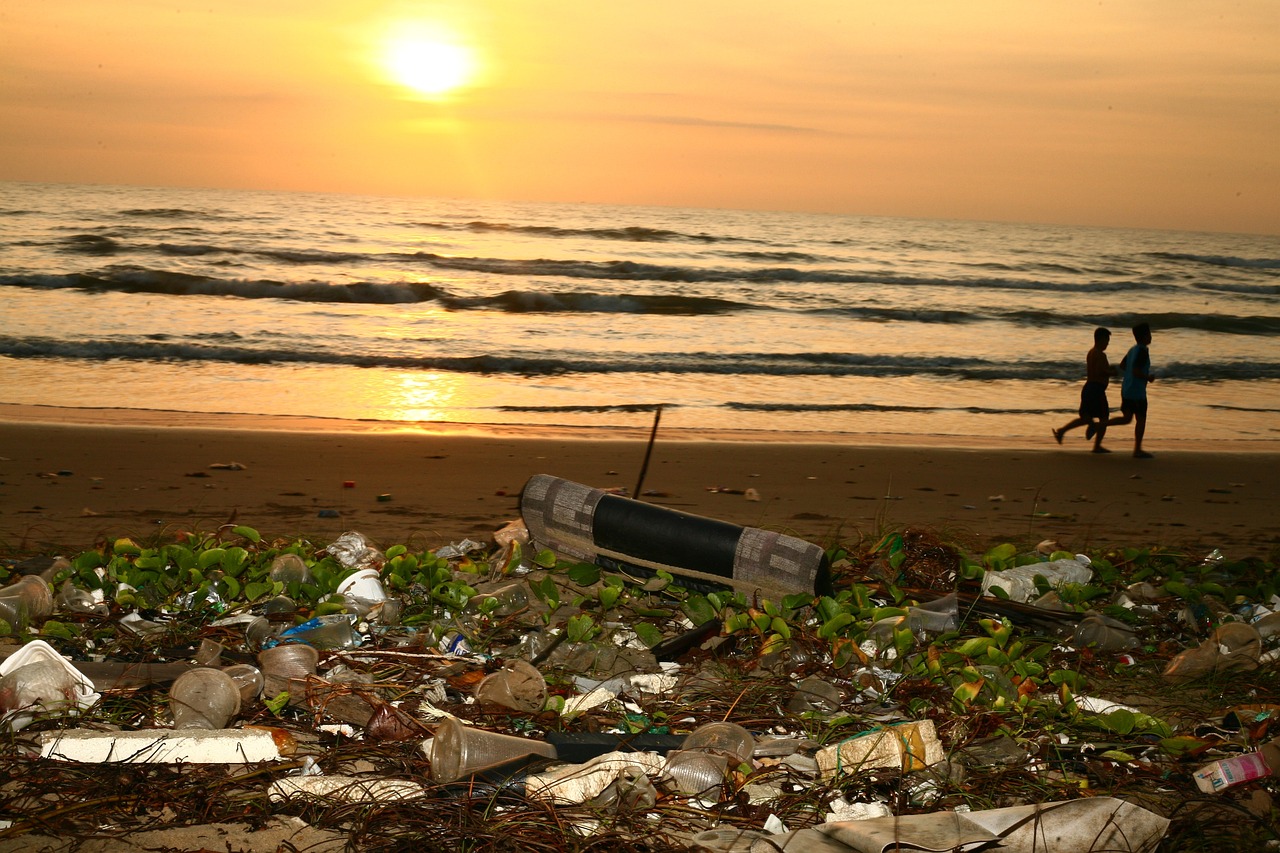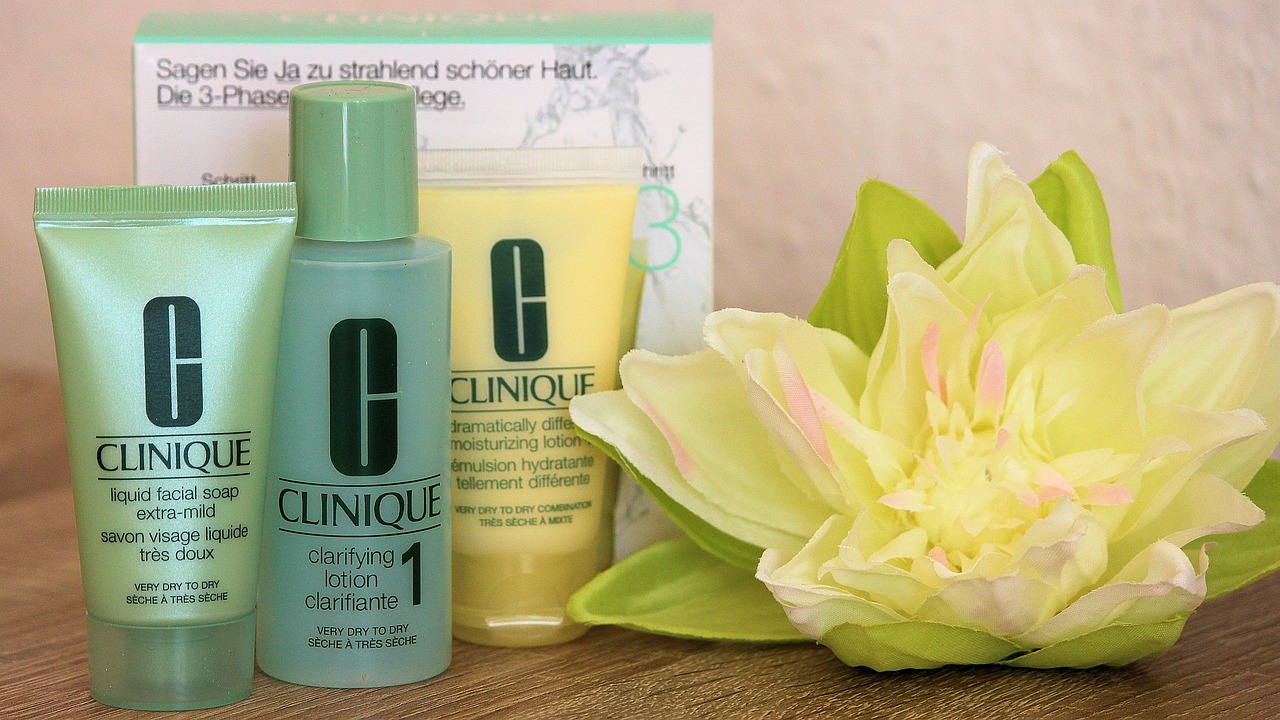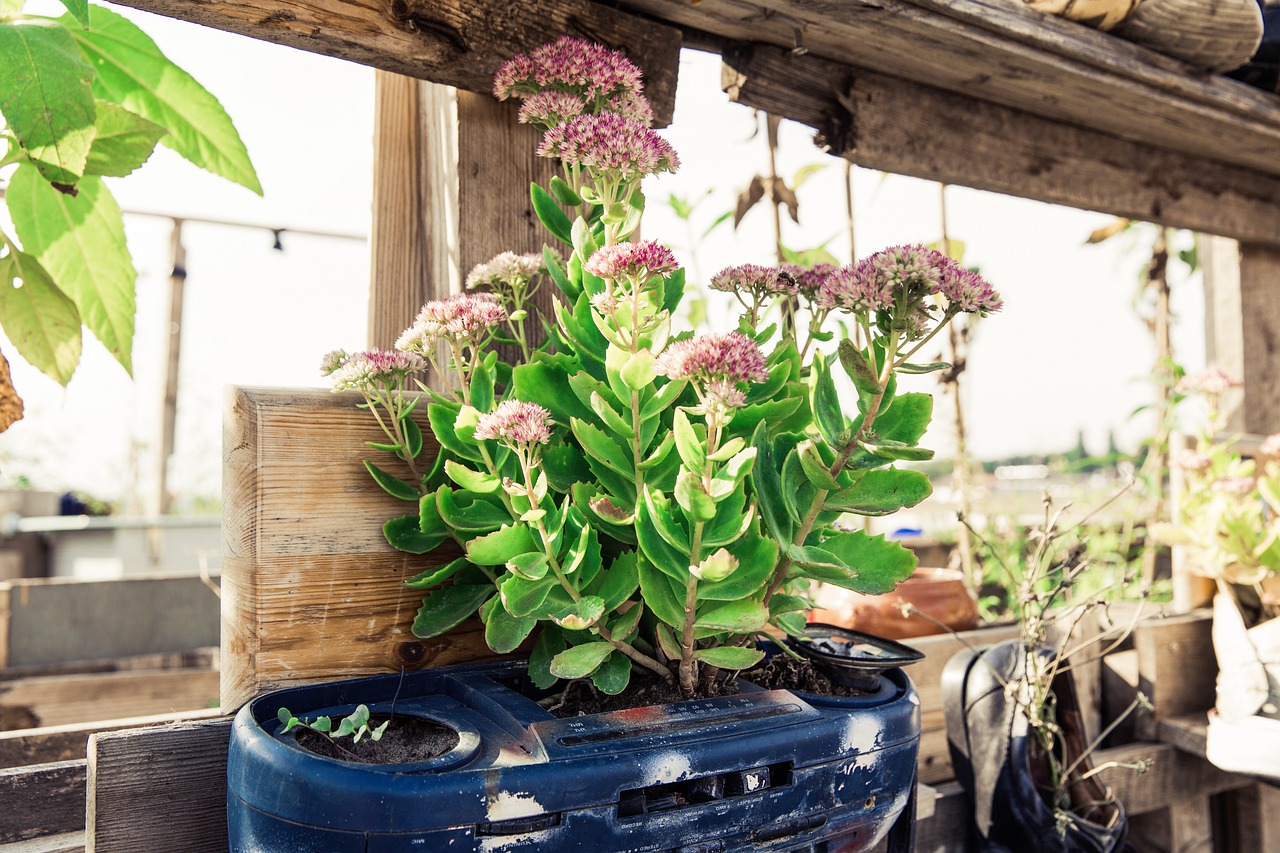The Environmental Impact of the Cosmetics Industry
The cosmetics industry is often associated with beauty and glamour, but beneath the surface lies a complex web of environmental challenges. From the moment a product is conceived to when it reaches the consumer's hands, the impact on our planet can be significant. The beauty sector is not just about looking good; it also involves resource consumption, waste generation, and the potential for creating a more sustainable future. This article dives deep into the various ways the cosmetics industry affects the environment and explores potential solutions for a greener beauty sector.
The production of cosmetics is resource-intensive, demanding significant amounts of natural resources. Water, minerals, and petroleum are just a few of the essentials that fuel this lucrative industry. For instance, did you know that it can take up to 7,000 liters of water to produce just one kilogram of some cosmetic ingredients? Understanding these demands is crucial for assessing the industry's overall environmental footprint. As we indulge in our favorite beauty products, it’s important to recognize that our choices have consequences. Are we willing to sacrifice our planet for a moment of beauty?
When it comes to cosmetics, packaging is often an overlooked aspect of environmental impact. The reality is that cosmetic packaging contributes to a staggering amount of waste. Many of the materials used are not recyclable, leading to overflowing landfills and pollution. Think about it: how many beauty products do you throw away each year? The implications of our packaging choices are profound. However, there are alternatives available that can help reduce waste, such as refillable containers and biodegradable materials. By opting for more sustainable packaging solutions, we can make a significant difference.
Plastic is a major component of cosmetic packaging, and its presence in our oceans and ecosystems is alarming. Every year, millions of tons of plastic waste find their way into the ocean, harming marine life and disrupting ecosystems. The cosmetics industry plays a role in this crisis, with many products encased in single-use plastic. This is a wake-up call for consumers and manufacturers alike. We must ask ourselves: can we continue to ignore the consequences of plastic pollution?
Even more concerning is the presence of microplastics in many cosmetic products. These tiny particles can cause severe harm to marine life and ultimately enter the food chain, posing risks to human health as well. Microplastics are often used as exfoliants or fillers in products, but their environmental impact is devastating. It’s time to rethink our beauty routines and demand products that are free from these harmful substances. The question remains: do we really need microplastics to achieve beauty?
Fortunately, there is hope on the horizon with innovations in biodegradable packaging materials. These alternatives offer a promising solution to the plastic waste crisis in the cosmetics industry. Companies are now exploring options like plant-based plastics and compostable materials that can significantly reduce the environmental footprint of their products. Embracing these alternatives not only benefits the planet but also aligns with the growing consumer demand for sustainable options. The future of beauty could be bright and green!
Sourcing ingredients sustainably is essential for minimizing environmental harm. The cosmetics industry relies heavily on natural resources, which can lead to deforestation, habitat destruction, and loss of biodiversity if not managed responsibly. Ethical sourcing practices ensure that ingredients are harvested in a way that protects ecosystems and supports local communities. By prioritizing sustainable sourcing, companies can make a positive impact on the environment while delivering high-quality products to consumers. Are we ready to support brands that value ethical practices over mere profit?
The cosmetics industry is not just about pretty packaging and alluring fragrances; it also contributes to greenhouse gas emissions through its manufacturing processes. The carbon footprint associated with production and distribution is a critical aspect of the industry's environmental impact. From the extraction of raw materials to the final product reaching store shelves, every step contributes to emissions that are harmful to our planet.
Energy-intensive manufacturing processes play a significant role in the industry's carbon footprint. The cosmetics sector often relies on fossil fuels and non-renewable energy sources, which not only deplete resources but also contribute to climate change. However, there are trends emerging that focus on energy efficiency and renewable energy solutions. By adopting energy-saving technologies, the industry can significantly reduce its carbon emissions. Isn’t it time for beauty to go green?
The transportation of cosmetic products further adds to the industry's environmental impact. The logistics and distribution methods used can create substantial emissions. Optimizing these processes is essential for lowering the carbon footprint associated with transporting products worldwide. By utilizing more efficient transportation methods and local sourcing, companies can help mitigate their environmental impact. It’s a small change that can lead to significant results.
Policies and regulations play a vital role in promoting sustainability within the cosmetics sector. Governments and organizations are increasingly recognizing the need for a regulatory framework that encourages environmentally friendly practices. Current initiatives aimed at reducing the industry's environmental impact include stricter regulations on packaging waste and incentives for companies that prioritize sustainability.
International standards are emerging to guide sustainable practices in cosmetics. These standards help ensure that companies are held accountable for their environmental impact and encourage them to adopt more sustainable practices. The effectiveness of these standards in promoting industry-wide change is crucial for the future of cosmetics. Are we ready to embrace these global standards for a better tomorrow?
Many cosmetic companies are stepping up to the plate by adopting corporate responsibility initiatives to address environmental issues. These programs often focus on reducing waste, promoting ethical sourcing, and minimizing carbon footprints. Highlighting successful programs and their positive outcomes for sustainability can inspire other companies to follow suit. It’s a collective effort that can lead to a brighter, more sustainable future for the cosmetics industry.
- What is the biggest environmental issue caused by the cosmetics industry? The largest issue is plastic pollution, particularly from packaging and microplastics found in products.
- Are there sustainable alternatives to traditional cosmetic packaging? Yes, many brands are now using biodegradable and refillable packaging options.
- How can consumers make more environmentally friendly choices in cosmetics? Look for products with sustainable sourcing, minimal packaging, and those that are free from harmful microplastics.
- What role do regulations play in promoting sustainability in cosmetics? Regulations help set standards for waste management and ethical sourcing, encouraging companies to adopt greener practices.

Resource Consumption in Cosmetics
The cosmetics industry is a vibrant and dynamic sector that many people adore, but have you ever stopped to think about the hidden costs behind your favorite beauty products? The production of cosmetics requires a staggering amount of natural resources, including water, minerals, and petroleum. Understanding these demands is crucial for assessing the industry's overall environmental footprint. For instance, did you know that the average bottle of shampoo can consume up to 1,000 liters of water just during its production? That’s enough to fill an entire bathtub!
Water is often the unsung hero in the cosmetics arena. From the cultivation of raw ingredients to the final product, water plays a vital role. However, excessive water consumption can lead to scarcity issues, especially in regions already suffering from drought. The extraction of minerals and petroleum also raises eyebrows. These resources are not only finite but their extraction processes can lead to significant environmental degradation. For example, mining for minerals can result in habitat destruction and soil erosion, while petroleum extraction contributes to air and water pollution.
Furthermore, the sourcing of ingredients often involves extensive agricultural practices, which can be resource-intensive. The use of fertilizers and pesticides in conventional farming can lead to soil degradation and water pollution, affecting local ecosystems. Therefore, the cosmetics industry’s resource consumption is not just a matter of numbers; it has real-world implications for biodiversity and the health of our planet.
To put this into perspective, consider the following table that illustrates the resource consumption associated with common cosmetic products:
| Product | Water Usage (liters) | Mineral Extraction (kg) | Petroleum Usage (liters) |
|---|---|---|---|
| Shampoo | 1,000 | 0.5 | 0.2 |
| Foundation | 500 | 0.3 | 0.1 |
| Moisturizer | 800 | 0.4 | 0.15 |
As consumers, we often overlook these aspects while indulging in our beauty rituals. But what if we could make more informed choices? By opting for brands that prioritize sustainable sourcing and production methods, we can help alleviate some of the pressure on our planet's resources. For instance, the rise of eco-friendly and organic cosmetics is not just a trend; it's a response to the growing awareness of the environmental impact of traditional beauty products.
Ultimately, the cosmetics industry has a significant role to play in resource consumption. By understanding these dynamics, we can push for change and encourage companies to adopt more sustainable practices. After all, isn’t it time we made beauty not just about looking good, but also about feeling good about our choices?

Packaging Waste Issues
The cosmetics industry, while dazzling and glamorous, hides a darker truth beneath its shiny surfaces: the **massive amount of waste** generated from packaging. Every year, millions of tons of packaging material end up in landfills, contributing to an ever-growing environmental crisis. It's essential to understand that the choices made in packaging not only affect the product's appeal but also have significant implications for the planet. Many cosmetic products are encased in materials that are difficult, if not impossible, to recycle, leading to a **mountain of waste** that our planet simply cannot handle.
Consider this: the average consumer might buy a new lipstick or moisturizer without a second thought about its packaging. Yet, that single product often comes with layers of plastic, cardboard, and other materials that are not biodegradable. In fact, a staggering **120 billion units** of packaging are produced by the cosmetics industry each year. To put that into perspective, if all that packaging were laid end-to-end, it would wrap around the Earth over **twice**! This is where the conversation about sustainable packaging becomes critical.
The implications of these packaging choices are far-reaching. Not only do they contribute to **landfill overflow**, but they also exacerbate problems like **ocean pollution** and **wildlife endangerment**. For instance, plastic waste can take hundreds of years to decompose, leaching harmful chemicals into the soil and waterways during that time. The urgency for brands to adopt more sustainable practices is palpable. But what are the alternatives?
Fortunately, there are several promising solutions on the horizon. Many companies are beginning to explore **biodegradable materials** and **refillable packaging options**. These innovations not only reduce waste but also appeal to the growing number of environmentally conscious consumers. Imagine a world where your favorite beauty products come in containers that can be reused or composted! This shift not only helps the environment but also aligns with the values of a new generation of consumers who prioritize sustainability.
To illustrate the scale of the issue, here’s a simple table that breaks down the types of packaging materials commonly used in cosmetics and their recyclability status:
| Packaging Material | Recyclability | Environmental Impact |
|---|---|---|
| Plastic | Low (often non-recyclable) | Contributes to ocean pollution, takes hundreds of years to decompose |
| Glass | High | Recyclable, less environmental impact if recycled properly |
| Cardboard | Moderate | Biodegradable but can contribute to deforestation if not sourced sustainably |
| Aluminum | High | Recyclable, reduces landfill waste when recycled |
In conclusion, the issue of packaging waste in the cosmetics industry is not just a minor inconvenience; it's a pressing environmental crisis that demands our attention. By becoming more aware of the materials used in our beauty products and advocating for sustainable packaging, we can all play a role in reducing waste and protecting our planet. As consumers, we have the power to influence change by choosing brands that prioritize sustainability and by demanding better practices from the industry as a whole. Let’s not just beautify ourselves; let’s also beautify our planet!
Q1: What are the main materials used in cosmetic packaging?
A1: The most common materials include plastic, glass, cardboard, and aluminum. Each has different levels of recyclability and environmental impact.
Q2: Why is plastic packaging a problem?
A2: Plastic is often non-recyclable and can take hundreds of years to decompose, contributing significantly to landfill waste and ocean pollution.
Q3: What are biodegradable packaging options?
A3: Biodegradable packaging materials break down more quickly and safely in the environment, reducing long-term waste and pollution.
Q4: How can consumers influence sustainable packaging practices?
A4: By choosing brands that prioritize sustainability, advocating for better practices, and supporting companies that use eco-friendly packaging, consumers can drive change in the industry.

Plastic Pollution
Plastic pollution has become a pervasive issue, and the cosmetics industry plays a significant role in this environmental crisis. Every year, millions of tons of plastic waste are generated from cosmetic packaging, which often ends up in landfills, oceans, and other ecosystems. This is not just a matter of aesthetics; the implications are dire for marine life and biodiversity. Imagine a sea turtle mistaking a plastic bottle for a jellyfish, or fish consuming microplastics that could eventually end up on our dinner plates. The connection between beauty products and plastic pollution is alarming and warrants urgent attention.
The primary materials used in cosmetic packaging are often non-biodegradable, meaning they can take hundreds of years to decompose. This creates a cycle of waste that is difficult to break. For instance, many brands rely on single-use plastics, which are convenient for consumers but catastrophic for the environment. According to recent studies, it is estimated that approximately 120 billion units of packaging are produced by the cosmetics industry each year, most of which are not recyclable. This staggering figure highlights the urgent need for change.
To grasp the magnitude of plastic pollution from cosmetics, consider these key statistics:
| Year | Plastic Waste (in million tons) | Cosmetics Contribution (%) |
|---|---|---|
| 2018 | 300 | 8 |
| 2019 | 350 | 9 |
| 2020 | 400 | 10 |
As you can see from the table above, the contribution of the cosmetics industry to global plastic waste is steadily increasing. This is not just a statistic; it represents real harm to our planet. The oceans are filled with microplastics that have originated from beauty products, leading to a ripple effect that impacts marine ecosystems and human health alike.
In response to this crisis, many companies are beginning to take steps toward more sustainable practices. Some are exploring alternatives to traditional plastic packaging, such as glass, metal, and even biodegradable materials. The shift towards sustainable packaging is not just a trend; it’s a necessity. Brands that prioritize eco-friendly options are not only helping the environment but also appealing to a growing demographic of consumers who are environmentally conscious.
In conclusion, the issue of plastic pollution linked to the cosmetics industry is a complex challenge that requires immediate action. By understanding the impact of our beauty routines, we can make informed choices that contribute to a cleaner, healthier planet. It's time for both consumers and companies to embrace sustainability and work towards a future where beauty does not come at the cost of our environment.

Microplastics in Products
Microplastics are tiny plastic particles, typically less than 5 millimeters in size, that have become a significant concern in the cosmetics industry. These minuscule particles can be found in a variety of beauty products, from exfoliating scrubs to face washes, and even in some lotions. But what exactly are microplastics doing in our cosmetics, and why should we be worried? Well, the truth is, these little invaders have a big impact on our environment.
When we wash our faces or scrub our bodies, these microplastics are washed down the drain and eventually make their way into our waterways. Once in the ocean, they can be consumed by marine life, leading to a cascade of environmental issues. Imagine a fish swimming around, unknowingly munching on tiny bits of plastic instead of its natural diet. This not only harms the fish but also poses potential risks to humans who consume seafood. The cycle continues, and before we know it, microplastics could be infiltrating our food chain.
To illustrate the scale of this issue, a recent study estimated that over 800 tons of microplastics are released into the oceans each year from cosmetic products alone. This staggering amount highlights the need for urgent action. But how do we combat this? Here are some of the primary sources of microplastics in cosmetics:
- Exfoliating Beads: Many scrubs use plastic beads to achieve that smooth skin feel, but these beads often end up in our waterways.
- Liquid Products: Some shampoos and conditioners contain microplastics to enhance texture or stability.
- Makeup: Certain formulations of makeup products, especially those with shimmer, may include microplastics for that extra sparkle.
As consumers become more aware of the environmental impact of their choices, many brands are being pushed to reconsider their formulations. The good news is that there are alternatives available! Brands are now exploring natural exfoliants like sugar, salt, or even ground coffee, which can effectively replace plastic microbeads. These natural options not only reduce plastic pollution but also offer a more eco-friendly approach to beauty.
In conclusion, while microplastics may seem like a small issue, their impact is anything but tiny. By choosing products that are free from these harmful particles, we can contribute to a healthier planet. It's time to take a stand and demand transparency from our favorite brands. After all, our beauty routine shouldn’t come at the expense of our environment!
What are microplastics?
Microplastics are tiny plastic particles less than 5mm in size, often found in various cosmetic products.
How do microplastics affect marine life?
Marine creatures can ingest microplastics, which can lead to health issues and disrupt the food chain.
Are there alternatives to microplastics in cosmetics?
Yes! Natural exfoliants like sugar, salt, and coffee grounds can replace plastic microbeads in scrubs and other products.
How can I avoid products with microplastics?
Check ingredient labels for terms like "polyethylene" or "polypropylene" and opt for brands that prioritize eco-friendly formulations.

Biodegradable Alternatives
The search for in the cosmetics industry has become a beacon of hope for environmental advocates and consumers alike. As awareness of the environmental damage caused by conventional plastic packaging grows, innovative companies are stepping up to the plate, offering solutions that not only reduce waste but also align with the values of sustainability-conscious consumers. Imagine a world where your favorite beauty products come in packaging that breaks down naturally, returning to the earth instead of lingering in landfills for centuries. Sounds dreamy, right?
Biodegradable packaging materials can significantly mitigate the environmental impact of the cosmetics industry. These materials can decompose through natural processes, unlike traditional plastics that persist in the environment for hundreds of years. For example, some brands are experimenting with packaging made from plant-based materials, such as cornstarch and sugarcane, which can break down more quickly when exposed to the right conditions. These alternatives not only help reduce plastic waste but also lessen the reliance on fossil fuels, which are often used in conventional plastic production.
Moreover, the use of biodegradable materials can extend beyond just packaging. Think about the actual products we use. Some companies are incorporating biodegradable ingredients into their formulations, ensuring that when these products are washed away, they won't contribute to the growing problem of microplastics in our waterways. It’s a win-win situation where both the product and its packaging are environmentally friendly.
However, it’s essential to recognize that not all biodegradable materials are created equal. The effectiveness of biodegradation can depend on various factors, including the environment in which they are disposed of. For instance, some biodegradable plastics require industrial composting facilities to break down properly, which are not available everywhere. Therefore, consumer education is crucial. Shoppers need to be informed about how to dispose of these materials correctly to maximize their environmental benefits.
As we delve deeper into the world of biodegradable alternatives, it becomes clear that the cosmetics industry is at a crossroads. The shift towards sustainable packaging is not just a trend; it represents a fundamental change in how beauty brands operate. The challenge lies in balancing functionality, cost, and environmental impact. But with increased consumer demand for sustainable products, the industry is gradually moving in the right direction.
In conclusion, biodegradable alternatives offer a promising path toward a more sustainable cosmetics industry. As consumers, we have the power to drive this change by supporting brands that prioritize eco-friendly practices. The next time you reach for a beauty product, consider its packaging and ingredients. You might just be contributing to a greener planet, one lipstick tube at a time!
- What are biodegradable alternatives? Biodegradable alternatives refer to materials that can break down naturally in the environment, reducing waste and pollution.
- Are biodegradable cosmetics effective? Yes, biodegradable cosmetics can be just as effective as their traditional counterparts, often using innovative ingredients and packaging that are better for the planet.
- How should I dispose of biodegradable packaging? It is essential to follow local disposal guidelines. Some biodegradable materials require industrial composting, while others can break down in home compost bins.
- Are all biodegradable products environmentally friendly? Not necessarily. The environmental impact depends on the material and the conditions required for biodegradation.

Sustainable Sourcing Practices
The cosmetics industry is at a pivotal moment when it comes to . As consumers become increasingly aware of the environmental impact of their purchases, brands are feeling the pressure to source their ingredients responsibly. But what does "sustainable sourcing" really mean? Essentially, it refers to obtaining raw materials in a way that is environmentally friendly, socially responsible, and economically viable. This practice not only helps to preserve biodiversity but also ensures that communities involved in the supply chain are treated fairly and ethically.
One of the key aspects of sustainable sourcing is the emphasis on ethical ingredient procurement. Companies are now looking beyond just the price tag of ingredients. They consider the environmental and social implications of their sourcing decisions. For instance, sourcing palm oil sustainably can help protect rainforests and the wildlife that inhabit them. Similarly, sourcing shea butter from local cooperatives can empower communities, providing them with a fair wage and improving their quality of life.
Furthermore, the importance of transparency cannot be overstated. Consumers want to know where their products come from. Brands that are open about their sourcing practices often gain a significant competitive edge. This transparency can be achieved through detailed labeling, certifications, and even by sharing stories about the farmers and communities that produce their ingredients. Traceability is becoming a buzzword in the industry, and for good reason—it allows consumers to make informed choices and supports brands that prioritize sustainability.
To illustrate the impact of sustainable sourcing, consider the following table that highlights some common cosmetic ingredients and their sustainable sourcing practices:
| Ingredient | Sourcing Practice | Environmental Impact |
|---|---|---|
| Shea Butter | Fair trade from local cooperatives | Supports community livelihoods and reduces deforestation |
| Palm Oil | Certified sustainable palm oil (CSPO) | Helps protect rainforests and reduces habitat destruction |
| Aloe Vera | Organic and local sourcing | Minimizes carbon footprint and supports local economies |
By adopting these sustainable sourcing practices, the cosmetics industry can significantly reduce its environmental footprint. In addition, it can foster a sense of community and responsibility, making consumers feel good about their purchases. As we continue to navigate the complexities of sustainability, it’s essential for brands to innovate and find new ways to source ingredients that align with both ecological and ethical standards. The journey toward sustainability is ongoing, but with each step, the industry moves closer to a more responsible future.
- What is sustainable sourcing in the cosmetics industry? Sustainable sourcing refers to the procurement of raw materials in an environmentally friendly, socially responsible, and economically viable manner.
- Why is sustainable sourcing important? It helps preserve biodiversity, supports local communities, and reduces the environmental impact of cosmetic products.
- How can consumers identify sustainably sourced products? Look for certifications, transparent labeling, and brands that share stories about their sourcing practices.

Carbon Footprint of Production
The cosmetics industry is not just about beauty; it has a significant carbon footprint that contributes to global warming and climate change. Every time you purchase a lipstick or a bottle of shampoo, you're not just buying a product; you're also engaging in a process that consumes energy and resources, ultimately releasing greenhouse gases into the atmosphere. It's like a hidden cost that often goes unnoticed in the glitz and glamour of the beauty world.
To truly understand the impact of cosmetics on our planet, we need to dive into the various stages of production. From sourcing raw materials to manufacturing and distribution, each step has its own environmental implications. For instance, the extraction of natural ingredients often involves deforestation and habitat destruction, which leads to a loss of biodiversity and increases carbon emissions. It's a vicious cycle, where the demand for beauty products fuels environmental degradation.
Moreover, the manufacturing processes involved in creating cosmetics are typically energy-intensive. Factories run on electricity derived from fossil fuels, which significantly adds to the industry's carbon footprint. According to recent studies, the cosmetics sector contributes to approximately 1.5 billion tons of CO2 emissions annually. This staggering figure is a wake-up call for consumers and manufacturers alike to rethink their practices.
Let's break down the carbon footprint into key components:
| Component | Impact on Carbon Footprint |
|---|---|
| Sourcing Ingredients | Deforestation and habitat loss increase CO2 levels. |
| Manufacturing | High energy consumption leads to significant emissions. |
| Packaging | Production of packaging materials contributes to waste and emissions. |
| Transportation | Logistics and distribution add to the overall carbon footprint. |
As we can see, each aspect of production plays a crucial role in determining the overall carbon emissions associated with cosmetics. But here's the good news: there are ways to mitigate this impact. Companies are beginning to adopt sustainable practices aimed at reducing their carbon footprint. For example, many brands are now investing in renewable energy sources to power their manufacturing facilities. This shift not only helps in reducing emissions but also sets a precedent for the entire industry.
Additionally, optimizing logistics can significantly lower transportation emissions. By choosing local suppliers and reducing the distance products travel, companies can make a substantial difference. It's like choosing to walk to a nearby store instead of driving across town; the smaller the journey, the less fuel consumed and the fewer emissions produced.
In conclusion, while the cosmetics industry has a considerable carbon footprint, it is not insurmountable. With collective efforts from consumers and manufacturers to adopt more sustainable practices, we can pave the way for a greener future in beauty. It's time to prioritize not just how we look, but also how our choices impact the world around us.
- What is the carbon footprint of cosmetics? The carbon footprint of cosmetics refers to the total greenhouse gas emissions produced during the entire lifecycle of cosmetic products, including sourcing, manufacturing, packaging, and transportation.
- How can consumers help reduce the carbon footprint of cosmetics? Consumers can choose brands that prioritize sustainability, reduce waste, and utilize renewable energy in their production processes.
- Are there eco-friendly alternatives in cosmetics? Yes, many brands are now offering eco-friendly products that use biodegradable packaging and sustainably sourced ingredients.

Energy Consumption in Manufacturing
The cosmetics industry, like many others, is heavily reliant on energy-intensive manufacturing processes. This dependence not only drives up production costs but also contributes significantly to the industry's overall carbon footprint. To put it into perspective, consider that the production of a single cosmetic product can involve multiple stages, each requiring substantial energy input. From the extraction of raw materials to the formulation, packaging, and distribution, the energy consumption can be staggering.
For instance, the manufacturing of creams, lotions, and other beauty products often involves heating, cooling, and mixing processes that demand consistent energy supply. In fact, statistics show that the beauty and personal care sector accounts for approximately 30% of total energy consumption in the broader consumer goods industry. This statistic highlights the pressing need for companies to reassess their energy practices and seek out more sustainable solutions.
Moreover, the sources of energy used in manufacturing can vary widely. Many companies still rely on fossil fuels, which not only contribute to greenhouse gas emissions but also pose risks to energy security and price volatility. Transitioning to renewable energy sources such as solar, wind, or hydroelectric power can significantly reduce the environmental impact of production. In fact, some forward-thinking companies are already making strides in this area, aiming for a 100% renewable energy target by 2030.
To illustrate the potential impact of energy-efficient practices, consider the following table that compares traditional manufacturing methods with more sustainable alternatives:
| Manufacturing Method | Energy Consumption (kWh per product) | Carbon Emissions (kg CO2) |
|---|---|---|
| Traditional Methods | 5.0 | 1.2 |
| Sustainable Methods | 3.0 | 0.6 |
This table clearly shows that by adopting sustainable manufacturing methods, companies can reduce both energy consumption and carbon emissions significantly. However, it's not just about changing the energy source; it's also about improving efficiency in operations. Many companies are investing in energy-efficient technologies, such as advanced machinery and automation, which can lead to substantial energy savings over time.
Ultimately, the cosmetics industry has a unique opportunity to lead by example in the fight against climate change. By prioritizing energy efficiency and embracing renewable sources, cosmetic brands can not only reduce their environmental impact but also appeal to a growing consumer base that values sustainability. As customers become more conscious of their choices, brands that commit to sustainable energy practices will likely find themselves at a competitive advantage.
- What is the carbon footprint of the cosmetics industry?
The cosmetics industry contributes significantly to greenhouse gas emissions through energy-intensive manufacturing processes, packaging waste, and transportation. - How can cosmetic companies reduce energy consumption?
Companies can reduce energy consumption by adopting more efficient manufacturing processes, utilizing renewable energy sources, and investing in energy-efficient technologies. - What are microplastics, and why are they harmful?
Microplastics are tiny plastic particles found in many cosmetic products. They can harm marine life and enter the food chain, posing risks to ecosystems and human health. - Are there biodegradable alternatives for cosmetic packaging?
Yes, innovations in biodegradable packaging materials are emerging, offering promising solutions to reduce plastic waste in the cosmetics industry.

Transport Emissions
When we think about the environmental impact of the cosmetics industry, we often focus on the products themselves—what’s in them and how they’re packaged. However, we can't overlook the that come into play during the distribution of these products. Every time a lipstick or a bottle of moisturizer is shipped from the manufacturer to a retailer, or directly to consumers, it contributes to greenhouse gas emissions. This is a significant aspect of the industry’s carbon footprint that deserves our attention.
The transportation sector is a major contributor to global carbon emissions, and the cosmetics industry is no exception. With products often traveling thousands of miles, the cumulative effect can be staggering. For instance, transporting cosmetics by air is much faster but also far more carbon-intensive compared to shipping by sea or land. To put things into perspective, consider the following:
| Transport Method | Average CO2 Emissions per Ton-Mile |
|---|---|
| Air Freight | 1.25 kg |
| Truck | 0.15 kg |
| Rail | 0.05 kg |
| Ship | 0.01 kg |
As you can see, the difference is enormous. While air freight might be the go-to option for time-sensitive deliveries, it comes at a steep environmental cost. So, how can the cosmetics industry tackle this issue? One effective strategy is to optimize logistics and distribution methods. By carefully planning routes, consolidating shipments, and utilizing more sustainable transport options, companies can significantly reduce their transport emissions.
Moreover, local sourcing of ingredients and manufacturing can also play a vital role in minimizing transport distances. Imagine if a cosmetics brand sourced its ingredients from local suppliers and produced its products nearby; the emissions associated with transportation would drop dramatically. This not only benefits the environment but also supports local economies and fosters a sense of community.
In conclusion, while the focus on product formulation and packaging is essential, we must also consider the environmental impact of transport emissions in the cosmetics industry. By adopting more sustainable practices, the industry can take significant steps toward reducing its carbon footprint and contributing to a healthier planet.
- What are transport emissions? Transport emissions refer to the greenhouse gases released into the atmosphere as a result of transporting goods from one location to another.
- How do transport emissions affect the environment? They contribute to global warming and climate change by increasing the concentration of carbon dioxide and other greenhouse gases in the atmosphere.
- What can cosmetics companies do to reduce transport emissions? Companies can optimize their logistics, choose more sustainable transport methods, and source ingredients locally to minimize transport distances.
- Is air freight the most efficient way to transport cosmetics? While it is fast, air freight has a much higher carbon footprint compared to other methods like shipping by sea or rail.

Regulatory Frameworks and Initiatives
The cosmetics industry is under increasing scrutiny for its environmental impact, prompting the development of various regulatory frameworks and initiatives aimed at promoting sustainability. Governments, non-governmental organizations, and industry groups are recognizing that the path to a greener future involves not just individual actions but also comprehensive policies that guide the entire sector. These frameworks serve as a roadmap for companies, helping them navigate the complex landscape of environmental responsibility.
One of the most significant steps in this direction has been the introduction of global sustainability standards. These standards set benchmarks for companies to follow, ensuring that their practices align with environmental protection goals. For instance, the ISO 14001 standard focuses on effective environmental management systems, helping businesses minimize their ecological footprint. Companies that adhere to these standards not only enhance their credibility but also attract eco-conscious consumers.
In addition to global standards, many regions have implemented specific regulations targeting cosmetic products. The European Union, for example, has stringent regulations under the REACH (Registration, Evaluation, Authorisation, and Restriction of Chemicals) framework, which aims to protect human health and the environment from hazardous substances. Such regulations compel manufacturers to disclose the ingredients used in their products, promoting transparency and accountability.
Moreover, corporate responsibility programs are gaining traction within the industry. Many cosmetic companies are voluntarily adopting sustainability initiatives to demonstrate their commitment to environmental stewardship. These programs often include goals such as reducing greenhouse gas emissions, minimizing waste, and sourcing ingredients ethically. For example, a leading cosmetics brand may pledge to achieve carbon neutrality by a specific year, implementing strategies like offsetting emissions through reforestation projects or investing in renewable energy.
To further illustrate the impact of these initiatives, consider the following table that outlines some notable corporate sustainability programs in the cosmetics industry:
| Company | Sustainability Initiative | Impact |
|---|---|---|
| Brand A | Zero Waste Packaging | Reduced landfill waste by 50% |
| Brand B | Carbon Neutrality by 2025 | Offsetting 100% of emissions |
| Brand C | Ethical Sourcing Policies | Improved biodiversity and local economies |
These initiatives not only reflect a commitment to sustainability but also resonate with consumers who are increasingly demanding eco-friendly products. As awareness grows, companies that prioritize environmental responsibility are likely to gain a competitive edge in the market.
However, the journey towards sustainability is not without its challenges. The cosmetics industry must continually adapt to evolving regulations and consumer expectations. This dynamic landscape requires ongoing collaboration between stakeholders to ensure that sustainability measures are effective and far-reaching. By fostering partnerships between governments, NGOs, and businesses, the industry can drive meaningful change.
In conclusion, regulatory frameworks and initiatives are essential for steering the cosmetics industry towards a more sustainable future. As these measures take root, they pave the way for a sector that not only beautifies but also protects our planet. Will the industry rise to the occasion? Only time will tell, but with increasing momentum, the future looks promising.
- What are the main regulations affecting the cosmetics industry? Various regulations, including REACH in the EU and ISO 14001 standards, guide sustainable practices in the cosmetics sector.
- How can consumers identify sustainable cosmetics? Look for certifications, transparent ingredient lists, and brands that actively promote their sustainability initiatives.
- What role do corporate responsibility programs play? These programs help companies commit to environmental goals, reducing their overall ecological footprint and enhancing brand reputation.

Global Standards for Sustainability
The cosmetics industry is at a pivotal crossroads, facing immense pressure to adopt sustainable practices that not only meet consumer demand but also protect our planet. As awareness grows about the environmental impact of beauty products, global standards for sustainability are emerging as crucial guidelines for companies to follow. These standards aim to ensure that cosmetic products are produced, packaged, and marketed in a way that minimizes harm to the environment while promoting ethical practices.
One of the most significant frameworks guiding sustainability in cosmetics is the ISO 14001 standard, which focuses on effective environmental management systems. This standard encourages companies to continuously improve their environmental performance through more efficient resource use and reduction of waste. By adhering to ISO 14001, cosmetic brands can demonstrate their commitment to sustainability, thereby gaining consumer trust and loyalty.
Moreover, various organizations and coalitions are working to develop specific sustainability criteria tailored to the cosmetics industry. For instance, the Natural Products Association (NPA) has established guidelines for natural cosmetics, ensuring that products labeled as "natural" meet stringent criteria regarding ingredient sourcing and environmental impact. Such certifications not only help consumers make informed choices but also push companies to adopt more sustainable practices, creating a ripple effect throughout the industry.
In addition to these standards, many companies are voluntarily participating in sustainability initiatives and partnerships. For example, the UN Global Compact encourages businesses to align their operations with universal principles on human rights, labor, environment, and anti-corruption. By committing to these principles, cosmetic companies can enhance their sustainability efforts and contribute to broader global goals such as the United Nations Sustainable Development Goals (SDGs).
However, it's essential to recognize that while these standards and initiatives are a step in the right direction, their effectiveness largely depends on transparency and accountability. Consumers are increasingly demanding to know not just what is in their products but also how they are made. This shift towards transparency is prompting brands to disclose their sourcing practices, production methods, and environmental impact, fostering a culture of responsibility within the industry.
Ultimately, the adoption of global sustainability standards in the cosmetics industry is not just a trend; it's a necessity. By embracing these guidelines, companies can lead the way in creating a more sustainable future for beauty. As consumers, we have the power to support brands that prioritize the planet, encouraging others to follow suit. Together, we can drive change and promote a beauty industry that respects both people and the planet.
- What are global sustainability standards? Global sustainability standards are guidelines and frameworks designed to help industries, including cosmetics, minimize their environmental impact and promote ethical practices.
- Why are these standards important for the cosmetics industry? They are crucial as they help reduce resource consumption, waste generation, and promote responsible sourcing, ultimately leading to a healthier planet.
- How can consumers identify sustainable cosmetics? Look for certifications like ISO 14001, NPA, or other eco-labels that indicate a brand's commitment to sustainability.
- What role do companies play in promoting sustainability? Companies can adopt sustainable practices, participate in global initiatives, and ensure transparency in their operations to foster consumer trust and drive industry-wide change.

Corporate Responsibility Programs
The cosmetics industry is increasingly recognizing its role in promoting environmental sustainability through . These initiatives are designed to address the significant environmental challenges posed by the industry, including waste generation and resource depletion. Companies are beginning to understand that adopting sustainable practices not only benefits the planet but also enhances their brand reputation and consumer loyalty.
Many leading cosmetic brands have implemented programs that focus on various aspects of sustainability. For example, some companies have committed to reducing their carbon emissions by a specified percentage over a set period. This commitment often involves investing in renewable energy sources, optimizing manufacturing processes, and improving supply chain logistics. By setting measurable goals, these brands can track their progress and demonstrate their commitment to sustainability to consumers.
Moreover, ethical sourcing has become a cornerstone of many corporate responsibility initiatives. Companies are increasingly sourcing ingredients from suppliers who adhere to sustainable practices, ensuring that the extraction of raw materials does not harm local ecosystems or communities. This shift not only helps protect biodiversity but also supports fair labor practices, creating a positive impact on the communities involved in the supply chain.
To illustrate the impact of these programs, consider the following table that outlines some notable corporate responsibility initiatives from well-known cosmetics brands:
| Brand | Initiative | Impact |
|---|---|---|
| Brand A | 100% recyclable packaging by 2025 | Reduction of plastic waste by 50% |
| Brand B | Carbon neutrality by 2030 | Significant reduction in greenhouse gas emissions |
| Brand C | Sourcing 80% of ingredients from sustainable farms | Improved biodiversity and community welfare |
Additionally, many companies are engaging in community outreach programs aimed at educating consumers about sustainable beauty practices. By fostering awareness and encouraging responsible consumption, these brands are not only promoting their initiatives but also empowering consumers to make informed choices. This engagement can take various forms, from social media campaigns to workshops and partnerships with environmental organizations.
Despite these positive developments, challenges remain. The effectiveness of corporate responsibility programs often hinges on transparency and accountability. Consumers are becoming more discerning, demanding proof of a brand's commitment to sustainability. Companies must be willing to share their progress openly, which can sometimes be a daunting task. However, those that rise to the challenge often find that transparency builds trust and strengthens customer relationships.
In conclusion, corporate responsibility programs are transforming the cosmetics industry. By integrating sustainable practices into their operations, companies not only mitigate their environmental impact but also align themselves with the values of an increasingly eco-conscious consumer base. The road ahead may be fraught with challenges, but the potential for positive change is immense, and the industry is beginning to take significant strides toward a more sustainable future.
- What are corporate responsibility programs in the cosmetics industry? These are initiatives adopted by cosmetic brands aimed at promoting sustainability and minimizing environmental impact through practices such as ethical sourcing and waste reduction.
- How do these programs benefit companies? They enhance brand reputation, build consumer loyalty, and often lead to cost savings through more efficient operations.
- Can consumers influence corporate responsibility? Yes, consumer demand for transparency and sustainable practices encourages brands to adopt and maintain responsible initiatives.
Frequently Asked Questions
- What is the environmental impact of the cosmetics industry?
The cosmetics industry has a significant environmental impact, primarily through resource consumption, waste generation, and greenhouse gas emissions. From the water used in production to the plastic waste generated from packaging, the beauty sector's footprint is substantial. Understanding these impacts is crucial for addressing sustainability in cosmetics.
- How does packaging contribute to environmental issues?
Cosmetic packaging is a major contributor to environmental waste, with many materials being non-recyclable. This results in large amounts of waste ending up in landfills and oceans. Switching to sustainable packaging options can greatly reduce this waste and its harmful effects on the environment.
- What role do microplastics play in cosmetics?
Microplastics are tiny plastic particles found in many cosmetic products. They pose a significant threat to marine life and can enter the food chain, leading to broader ecological consequences. Reducing or eliminating microplastics in beauty products is essential for protecting our oceans and ecosystems.
- Are there biodegradable alternatives for cosmetic packaging?
Yes! Innovations in biodegradable packaging materials are emerging as promising solutions to reduce plastic waste in the cosmetics industry. These alternatives not only help minimize environmental impact but also align with the growing consumer demand for sustainable products.
- How does the cosmetics industry contribute to carbon emissions?
The production and distribution of cosmetics contribute to greenhouse gas emissions through energy-intensive manufacturing processes and transportation. By optimizing these processes and adopting energy-saving technologies, the industry can significantly reduce its carbon footprint.
- What initiatives are in place to promote sustainability in cosmetics?
There are various regulatory frameworks and corporate responsibility programs aimed at promoting sustainability in the cosmetics sector. These initiatives encourage companies to adopt greener practices and reduce their environmental impact, paving the way for a more sustainable beauty industry.
- How can consumers contribute to a more sustainable cosmetics industry?
Consumers play a vital role by choosing products from brands that prioritize sustainability, reducing waste by opting for refillable or recyclable packaging, and being mindful of the ingredients they support. Every small action can collectively lead to significant change in the cosmetics industry.



















